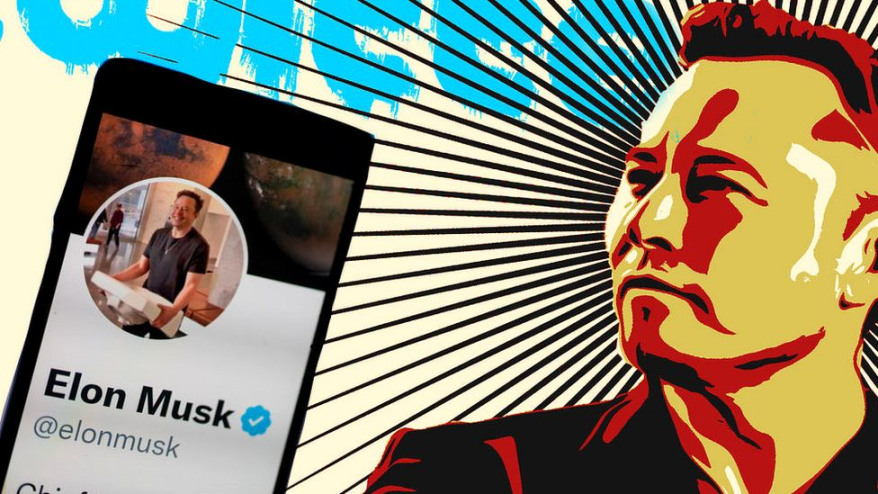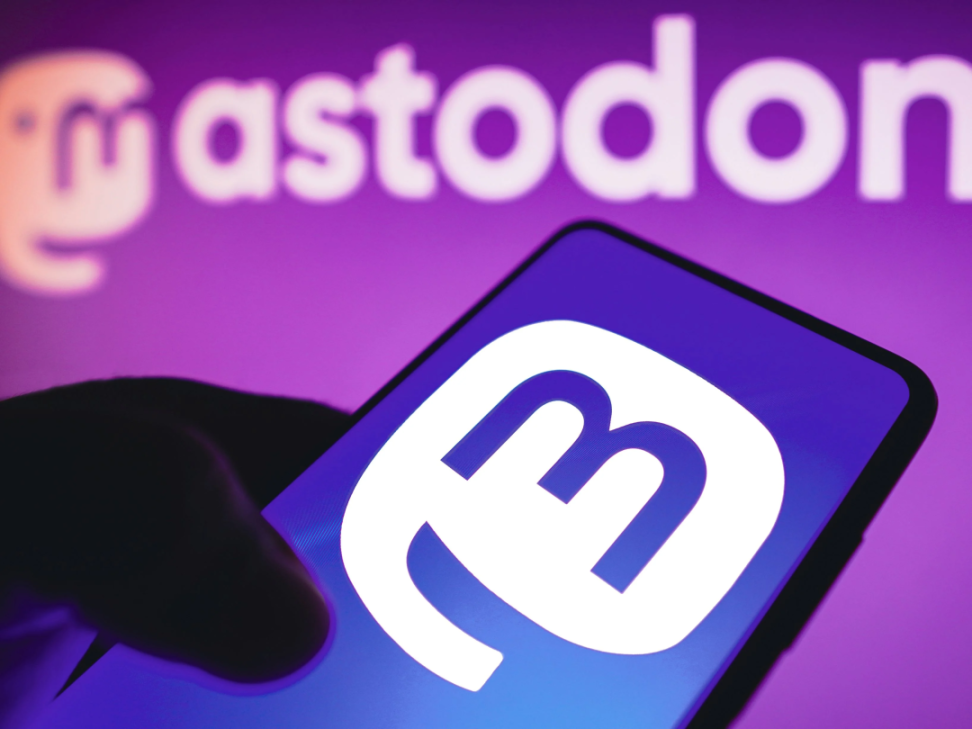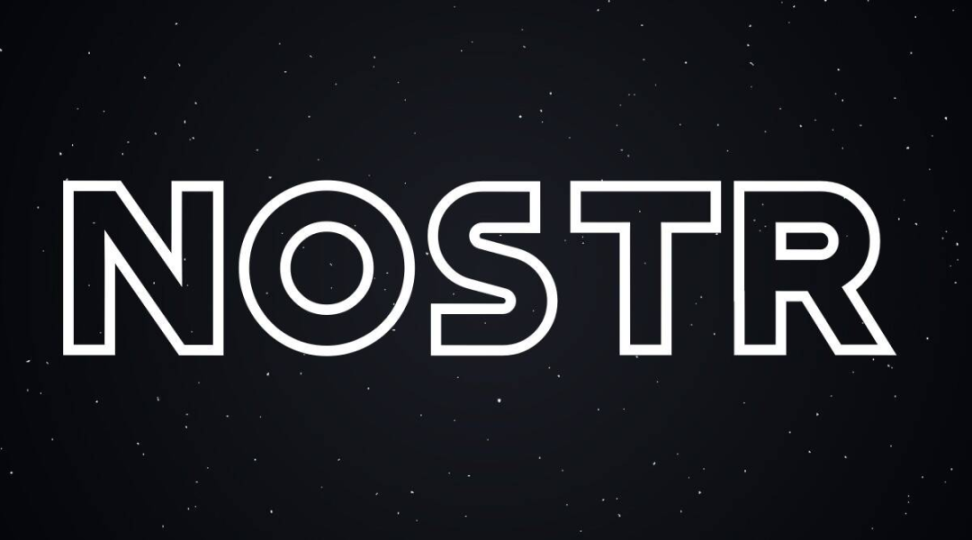Original title: "Original title: "》
Original author: Biteye core contributor Fishery
Original editor: Biteye core contributor Crush
Original editor: Biteye core contributor Crush
A few days after Twitter changed hands, Musk banned the appearance of other social media promotional accounts on the Twitter platform.
What does a decentralized "Twitter" look like? One article to understand the three major social agreements of Lens, Mastodon and nostr
First-time offenders will have their accounts temporarily suspended, and repeated offenders will be permanently banned.
Many media and users who don't know the truth will simply attribute Musk's decision as a measure for Twitter to increase advertising revenue and monopolize the Web2 market.
Combining the rapid increase in the number of users of the decentralized version of Twitter Mastodon and the intensive promotion of another decentralized Twitter nostr by former Twitter CEO @jack may provide another more reasonable explanation for Musk's behavior :
Musk is really scared, afraid that Twitter, which he just bought for tens of billions of dollars, will become the first Web2 traditional application replaced by a decentralized protocol.
Social Media Protocols and Decentralization
The concept of social media developed rapidly in the first decade of the 21st century, and with the blessing of mobile Internet technology in the past ten years, a large number of social media giants were born, such as: Twitter, WeChat, Instagram and so on.
As Bitcoin leads the concept of decentralization, people have gradually begun to care about the anti-censorship of social protocols (third parties cannot delete information) and immutability (how to ensure the authenticity of information without trusting third-party servers) .
What does a decentralized "Twitter" look like? Learn about the three social protocols of Lens, Mastodon and nostr in one article
However, unlike the above-mentioned decentralization protocol, which achieves the goal of decentralization from the server level, Lens as a whole relies on the blockchain as a decentralized solution, storing user content on the chain and controlled by its own wallet.
From the perspective of operation strategy, the Lens solution originated from the currency circle (Polygon + IPFS), and most of them are currently from Web3 users.
The technical solutions of Mastodon and nostr are implemented by a group of non-profit technical geeks (most of the developers are not from the currency circle), and most of the users are those who believe in decentralization or have anti-censorship needs. These groups are scattered in various communities and are more popular, not limited to Web3 users, so the topics within the social protocol are more extensive.
What does a decentralized "Twitter" look like? One article to understand the three major social agreements of Lens, Mastodon and nostr
Some Web3 readers may be unfamiliar with the Fediverse level, which is a form of decentralization.
In a federated system, any third party can run the server. Ordinary users can build their own servers or choose a server run by a trusted third party to save their data, and then communicate with the outside world through the third party's broadcast function.
E-mail is the simplest example. We use the company's internal mail domain name, which is equivalent to a self-built federal server, and the data is kept by our company.
And use the mailbox of 163 domain name, the history record of sending and receiving of our mailbox is in the hands of 163, and the corresponding qq mailbox server has no right to access the detailed data of 163, but the email system is a federation, and qq can communicate with 163 mailbox.
Federated is the pioneer of the concept of decentralization in Web3. In the past ten years of development, federated services have accumulated a fairly professional open source ecosystem.
Ecological list: https://github.com/emilebosch/awesome-fediverse
On a certain level, federated projects are more pure than the current web3 projects. It has no economic incentive system, and the federal-style decentralization has attracted a large number of hardcore active users and public welfare servers. Provider, the most common example is P2P downloading.
In the absence of incentives, a large number of people still occupy their own network bandwidth and hard disk space (when P2P downloads data, there must be someone else who has the file you want to download in their computer and is willing to contribute the network bandwidth to save the same file uploaded to you).
In addition to e-mail and p2p downloads, which have been federated applications since their appearance, there are also a number of applications that try to use the concept of federated decentralization to compete with traditional Web2 products. Sex and other core selling points get more traffic from the stock market. The most representative of such products is the Twitter-like application Mastodon (mammoth).
Mastodon: A Federated Alternative to Twitter
What does a decentralized "Twitter" look like? One article to understand the three major social agreements of Lens, Mastodon and nostr
Each Mastodon operation site (operated by a third party) is called an "instance (Instance)", users can register with any open registration entity, and users on any entity can communicate with users on other entities.
The content posted by users in Mastodon is called "toot", and users can adjust the privacy settings to limit the content of toots from being read or viewed by other people or entities.
Unlike Twitter, this service is positioned as a small community that operates independently and community-based (rather than top-down) censorship and service operation. These communities can cooperate and interoperate but do not depend on each other.
Like Twitter, Mastodon supports users to send private messages, but unlike the "tweets" posted by Twitter, Mastodon's "toots" can choose to be private to the user's followers, public to a specific instance, or public through the instance network .
Because Mastodon is free and open source, only donations can be used to support the development team and operating costs of instance servers.
At present, Mastodon's monthly active users have just exceeded 2.5 million (or 8 million in another way). For an Internet product that has been in development for more than 6 years but has no business model, the development process is indeed not easy.
If you evaluate Mastodon from the perspective of a decentralized track, this kind of data of hundreds of thousands of real monthly active users can be described as a phenomenal existence in the Web3 world.
It is important to know that most of the large number of "Web3 Twitter" projects valued at tens of millions of dollars that emerged at the end of last year and the beginning of this year have shut down their servers.
Looking back at this type of "Web3 Twitter" project, you will find that the user's data does not belong to the user itself, but is stored in the server leased by the project party. The project party only added the wallet login function to the front end, and the final solution is still centralized technology. plan.
In terms of project quality, the code volume of these pseudo-Web3 projects is not even as good as a mobile app of Mastodon, but with a simple wallet login button, they have attracted tens of millions of people due to the popularity of Web3.
You must know that Mastodon’s instance operators are paying real money for the computer room cost of decentralization, and give the right to the user to choose. User data will only be stored in the instance server specified by the user, and the user only needs to use the trusted instance Server communication prevents other servers from obtaining user privacy information.
Mastodon has always been free and open source, so there are no annoying Twitter ads. In addition to using love to generate electricity, the only way to support the development team and the operating costs of the instance server is through donations.
If you have experienced Mastodon and all the "Web3 Twitters" at the same time, you will feel how crazy and ironic the moment the hot money pours in.
It should be emphasized that Mastodon’s federated mode of operation has not fundamentally achieved decentralization, and the major servers still operate according to the wishes of their owners. Domineering risk.
The advantage brought by federated decentralization is that users can freely choose instances they trust (in a fully decentralized scenario, users do not need to trust instances), and servers are dispersed in various regions to avoid the simultaneous downtime of centralized cloud services. risk of bringing down the entire agreement.
Under extreme conditions, if the instance is to stop running, Mastodon stipulates that the server owner must notify the user that the server will be shut down three months in advance, so that the user can back up the migration data in advance.
From the phenomenon of Mastodon, it can be seen that decentralization has endogenous value. Even if there is no economic incentive model and no standardized team operation, Mastodon is only easy to use and relatively decentralized. It still attracts hundreds of thousands of users to actively use the product, and it can still gather a group of high-level developers to actively upgrade the code. library.
Today, some Web3 giants are also paying attention to the federated track. Last week, the social leader Mask Network acquired Pawoo.net, the second largest instance service provider on the Mastodon network. We can expect the decentralization of the federated architecture to bring Web3 new trend.
Just imagine if there is a new twitter-like application with blockchain incentives, true decentralization, and a user experience as smooth as Mastodon, it must have a higher development ceiling than Mastodon!
There really is such a project, which is nostr which will be introduced below.
Nostr: Twitter's ex-CEO revolutionizes Twitter
What does a decentralized "Twitter" look like? Learn about the three social protocols of Lens, Mastodon and nostr in one article
Nostr is divided into two components: clients and relayers. The client is used to sign and verify information and is run by the user; the repeater is responsible for delivering messages and can be run by anyone setting up a server.
The client stores the user's key internally. Each message must be signed and sent to the relay. The relay does not change the data. The verification of the authenticity of these messages is done by the client, so the user does not need to trust the relay , more in line with the spirit of decentralization.
Nostr not only has an advantage over the federal Mastodon in terms of technology, but also in terms of marketing, Jack Dorsey, who served as the CEO of Twitter twice during the development process, has carried the banner. There is no need to worry that Nostr will appear as unmanned as Mastodon. Propaganda dilemma.
Since the 15th of this month, Jack has been using his personal Twitter account to promote Nostr intensively every day. Coincidentally, 5 days after Jack was nostr's platform, Twitter officially announced the rules prohibiting third-party social media promotion.
The timing is so coincidental, it’s hard not to look at these two things together, maybe Musk is really scared. If Jack, like he helped Twitter in the past, makes Nostr bigger and has a blood-sucking effect on Twitter, then the market value of Twitter, which Musk raised $40 billion at the peak of the bull market, will continue to shrink significantly.
It can be said that in the turbulent period after Twitter changed hands, Jack is undoubtedly the most suitable candidate to promote a Twitter alternative product, no matter from the perspective of professionalism, influence or news topicality. According to media reports, Jack donated about 14 BTC, worth about $245,000, to further fund the development of Nostr.
The most important point is that the Web3 community can look forward to the Nostr storage incentive plan, which is different from Mastodon, which has undergone two full rounds of bull-bear conversions, but has not released its intention to move closer to the encryption community (issuing coins).
Nostr is just the opposite. It originated from the BTC community and already supports btc transfers, and the document also mentions hints that certain incentives will be given for storage and other functions in the future (the original sentence: "When the incentives are clear, market forces can easily solve the storage problem. .”).
As a decentralized social media, Nostr has closely united the cryptocurrency and Web3 communities from the very beginning. Compared with other Twitter predecessors who started with idle communities, Nostr has a much higher starting point, and its future composability with Web3 is even more possible. Brings out infinite possibilities.
Having said so much, let me briefly talk about the method and logic of participating in Nostr:
The general direction of the strategy is to use as many different clients as possible to increase the number of fans and post volume.
Currently Nostr has 9 third-party clients with different functions and compatibility. You can refer to them to choose the client that suits you.
Note: the newly created account will give two keys, the public key starting with npub is about equal to the account name and can be shared with others to facilitate others to search and follow;
The ones starting with nsec are private keys used for account login and should not be made public. In addition, there are two formats of public key and private key, one is the above-mentioned format starting with the specific 4 letters, and there is also a 64 format, 9 different clients have not standardized and fixed a format, you can use [damus.io/key] for format conversion.
write at the end
From the measures taken by Musk to block centralized Web2 friends and decentralized social media in such a radical way, it can be seen that he is worried about the trend of Twitter being replaced.
The emerging decentralized application nostr is expected to approach or surpass the current Twitter alternative big brother Mastodon in terms of technology and community, and Mastodon may further threaten Twitter's dominance.










